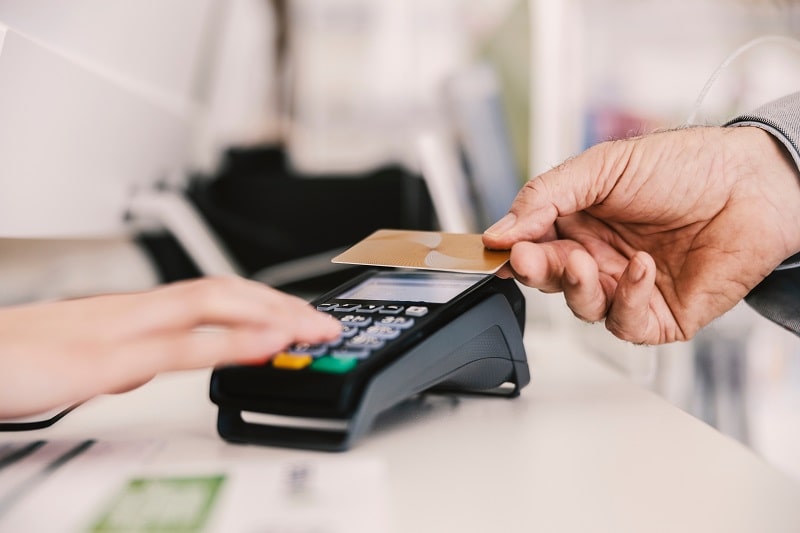For many consumers, credit cards are used to cover purchases when the consumer does not have the cash available or needs to pay off larger purchases over time. However, another option for delayed payment once available only at retailers carrying high-dollar inventory such as furniture, jewelry, and appliances, is growing in popularity. Point-of-sale loans are a form of “buy now, pay later” financing offered by an increasing number of retailers, especially those who sell online.
With point-of-sale financing, consumers can take their purchases home immediately, but pay for their purchase over time, rather than tendering the full balance upfront. Today, this payment option is available through many online retailers for everything from clothing to makeup, and even for custom creations found on Etsy and the extensive inventory available through Amazon. Point-of-sale loans are even beginning to pop up with airlines.
So, what is a point-of-sale loan? Here is a quick overview of this popular financing option including how it works, how point-of-sale loans impact your credit, and which lending companies offer this payment option.
What is a point-of-sale loan?
A point-of-sale loan is a flexible payment option in which a retailer allows a consumer to take possession of goods and make payments on the purchase balance over time. Rather than making a one-time purchase, the consumer can pay off the balance through several smaller, spread-out payments. This payment option has become especially popular through online retailers, as consumers are given the option at checkout to choose a payment plan to cover the balance rather than tendering the full balance upfront.
How does a point-of-sale loan work?
As with the process for most financing options, point-of-sale loans typically require an application for approval. You will provide the loan provider with basic personal information, the lender will run a credit check to determine if you are a good, reliable candidate for financing, and if approved, you will be provided with a payment schedule or payment plan options for your point-of-sale loan. Typically, your balance will be evenly distributed over the agreed-upon repayment terms. Your first payment will be due at checkout, and then you will tender the remaining balance through monthly payments.
Is a point-of-sale loan a good option?
Point-of-sale loans are not available to all consumers. As part of the application process, the loan provider will usually check your credit. Hard credit checks affect your credit more than a soft credit check, so this is something you should consider before applying for a loan. Not all loan providers report everything to credit bureaus. If the provider of your point-of-sale loan reports to the credit bureaus, you could see a positive impact to your credit for keeping up with your payments or you may take hits to your credit for negative activity such as late payments.
If it sounds too good to be true, it probably is. If the retailer charges zero interest and affordable payments, then a point-of-loan sale is a great option for those items you need but maybe cannot afford right now. However, many point-of-sale loans are not free. Retailers need to benefit from providing you with flexible payment options and they do that by charging interest. Ultimately, relying on a point-of-sale loan for your purchase means you will pay more for your purchase than you would have if you paid the full purchase amount upfront. For those big-ticket items, paying a few dollars in interest each month may make sense if you do not have the cash needed to cover the purchase upfront. However, for less expensive items, the final cost could be double or even triple the purchase price because of the interest that has accrued over time. This is especially a concern for point-of-sale loans that require monthly payments over a specific term and do not allow the flexibility for paying off the loan early.
Point-of-sale loans can be a great option for consumers who do not have long, established credit. Typically, lenders that offer point-of-sale financing have less rigid credit requirements than other financing options. Repayment terms are often quite favorable as well, though there is the potential for an extremely high-interest rate depending on the store you shop and the loan provider. Generally, though, point-of-sale loans may also offer lower interest rates than what your credit card offers, making them an affordable option for consumers who need a little bit of time to pay the balance but want to avoid an ever-increasing price tag due to interest.
Where can I get a point-of-sale loan?
There is no shopping around for a point-of-sale loan like you would for a personal loan or mortgage provider. Rather, a point-of-sale loan is typically available through one of the three providers: Affirm, Afterpay, or Klarna. The source of the loan depends on the retailer you are shopping with.
Affirm works with popular wellness companies like Peloton and Mirror. Because loan eligibility criteria and interest rates are determined by the retailer and not Affirm directly, your qualification and repayment terms will vary depending on where you shop. Afterpay offers borrowers standard terms, regardless of where you shop. A point-of-sale loan with Afterpay through stores like Old Navy and Bed Bath & Beyond will allow you to repay the loan through four-interest free installments due every two weeks. Klarna, who finances point-of-sale loans through retailers like Macy’s and Sephora, offers similar terms as Afterpay but focuses on a mobile app experience for loan management.
For more information about point-of-sale loans and to check eligibility, inquire with your favorite retailer.


